Showing 1–16 of 116 results
-
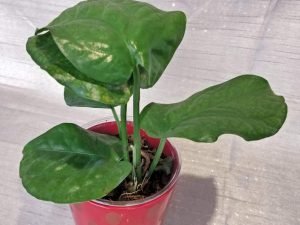
Amydrium Medium Green
Read moreAmydrium Medium Green is a rare aroid has one of the more interesting common names out there, in that it can sometimes be called a “Spiderman Monstera”, despite not being a Monstera! They have a more corrugated feel and grow at a pretty good speed. The Amydrium Medium’s leaves are interesting, in that not only does it have a “corrugated-like” texture, their leaves develop fenestrations as they grow!
Amydrium is a genus of flowering plants in the family Araceae that is native to Southeast Asia, southern China, and New Guinea. Amydrium is distinguished from other members of the tribe Monstereae by having two ovules in each ovary. The seeds tend to be heart shaped. The leaves of Amydrium often show fenestration
-
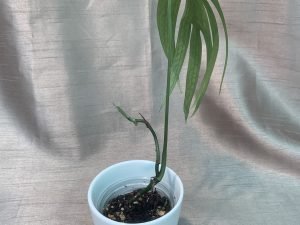
Amydrium Zippelianum
Read moreAmydrium Zippelianum is an exceptional Aroid with dark green palm or fern like leaves. Each leaf is produced far apart on a vining stem. Each leaf is produced far apart on a vining stem. It is an oddly looking plant that is often confused with Monsteras and Philodendrons.
Amydrium is a genus of flowering plants in the family Araceae that is native to Southeast Asia, southern China, and New Guinea. Amydrium is distinguished from other members of the tribe Monstereae by having two ovules in each ovary. The seeds tend to be heart shaped. The leaves of Amydrium often show fenestration
-
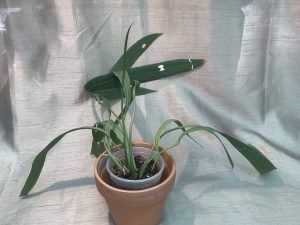
Anthurium Vittarifollium (B)
Read moreAnthurium Vittarifolium is a strap leaf anthurium that can reach large proportions. epiphyte can develop 7 to 10cm wide (3 to 4 inch) wide leaves that reportedly grow to 2.4 meters (8 feet) long.
Anthurium flowers (Anthurium sp.) have striking red coloring and lush green leaves. They are native to the West Indies, Central America and South America, but many people also associate them with Hawaii. They grow outdoors in tropical areas, but if you live in a non-tropical climate, you can grow them indoors.
-
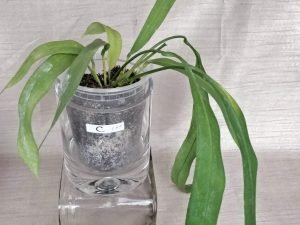
Anthurium Vittariforium (A)
Read moreAnthurium Vittarifolium is a strap leaf anthurium that can reach large proportions. epiphyte can develop 7 to 10cm wide (3 to 4 inch) wide leaves that reportedly grow to 2.4 meters (8 feet) long.
-
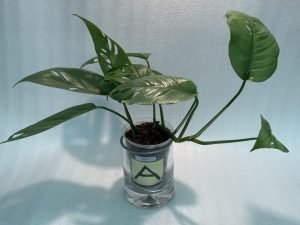
CEBU BLUE (A)
Read moreCebu Blue
Mature Plant Fully with Beautiful fenestrationsEpipremnum pinnatum ‘Cebu blue’ is a pretty and popular variety of pothos with shiny, silvery-blue leaves that seem to sparkle in the right light. Trailing or climbing, Cebu blue is a beautiful addition to any indoor jungle, and it gets bonus points for being such an easy-care plant.
-
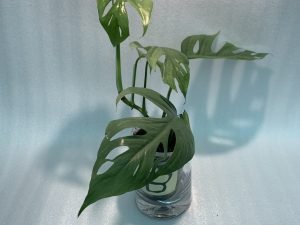
CEBU BLUE (B)
Read moreCebu Blue
Mature Plant Fully with Beautiful fenestrationsEpipremnum pinnatum ‘Cebu blue’ is a pretty and popular variety of Pothos with shiny, silvery-blue leaves that seem to sparkle in the right light. Trailing or climbing, Cebu blue is a beautiful addition to any indoor jungle, and it gets bonus points for being such an easy-care plant.
-
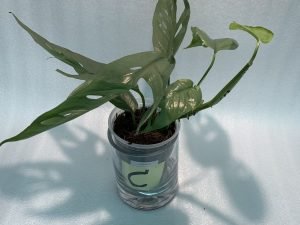
CEBU BLUE (C)
Read moreCebu Blue
Mature Plant Fully with Beautiful fenestrationsEpipremnum pinnatum ‘Cebu blue’ is a pretty and popular variety of pothos with shiny, silvery-blue leaves that seem to sparkle in the right light. Trailing or climbing, Cebu blue is a beautiful addition to any indoor jungle, and it gets bonus points for being such an easy-care plant.
-
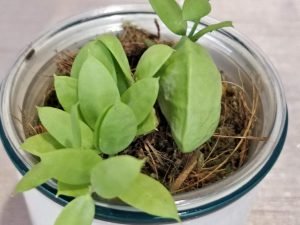
Dischidai PECTINOIDES (Ant Plant)
Read more💓Dischidai pectinoides
💓💓This plant is quite unique . It’s an unusual epiphytic vine belonging to the milkweed family. It grows small hollow pods that have roots inside. In nature, ants use these pods to live in, bringing with them food debris which turns into feeds
-
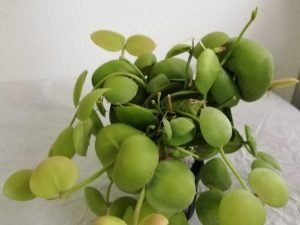
Dischidia imbricata
Read more🍄🍄Dischidia IMBRICATA🍄🍄
🍄🍄Dischidia IMBRICATA have firm.🍄🍄
It grows as an epiphyte, this plan also makes a great candidate for mounting on bark or wood plaques. Please in a indirect sunlight. -
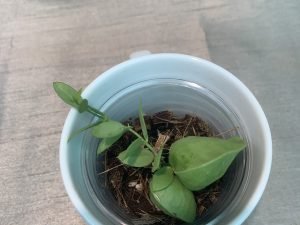
Dischidia Pectinoides
Read moreDischidia pectinoides is a curious little specimen that belongs to the same family as milkweed. It is a family of oddballs: climbers and vines with swollen-pocket leaves that resemble ravioli. These pods are called bullate leaves. Their insides can be hollow (not filled with ricotta and spinach) or in the case of some milkweeds, holding sticky, milk-colored fluid. Dischidia pectinoides has leaves with hollow interiors. In its native jungles and rain forests, the leaves are home to ant colonies that help pollinate the plant in exchange for, well, room and board.
-
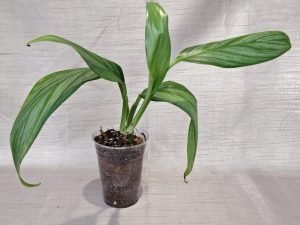
Epipremnum Amplissimum Silver Leaf
Read moreEpipremnum Amplissimum (Silver Leaf) ,also known as Pothos Amplifolia, is a member of the Araceae family of plants and its natural habitat is in parts of Australia and New Guinea. Long, lance-shaped leaves cover the vine closely together, nearly like armour, and each leaf becomes lined with silvery stripes oriented with the leaf’s veins. It tends to revert to plain green and short round leaves with insufficient lighting. The leaves are elongated, narrow and green with hints of a bluish grey color.
-
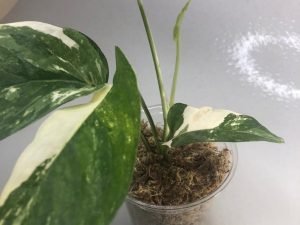
Epipremnum Pinnatum – White Variegated (Large)
Read moreEpipremnum Pinnatum are epiphytes (grow on trees/produce arial roots).This beautiful climbing plant that has fenestrated leaves (open windows on leaves) that are green with striking white and or cream-colored variegations.
Beautiful variegated form of a tough aroid with pure white splashes of color on a glossy dark green background.
-
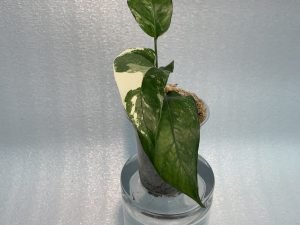
Epipremnum Pinnatum – White Variegated (Small)
Read moreEpipremnum Pinnatum are epiphytes (grow on trees/produce arial roots).This beautiful climbing plant that has fenestrated leaves (open windows on leaves) that are green with striking white and or cream-colored variegations.
Beautiful variegated form of a tough aroid with pure white splashes of color on a glossy dark green background.
-
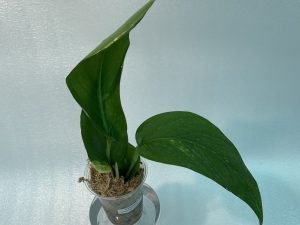
Epipremnum Pinnatum Yellow Variegated
Read moreEpipremnum Pinnatum “Variegata” or Epipremnum pinnatum is a species of flowering plant in the family Araceae. It has many common names, including centipede tongavine , Golden Pothos and dragon-tail plant. In the Philippines, it is known in Tagalog as tibatib.
This plant of Golden Pothos group can be grown in a regular potting mix on sunny to shaded places. Allow the soil to moderately dry between the waterings. Minimum temperature: 10 °C.
-
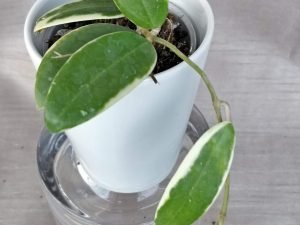
Hoya Acuta Variegated
Read moreThis Hoya has attractive waxy foliage with a white border to each leaf and produces sweetly scented flowers. The flowers are creamy white with pink-purple centers. They are star-shaped, and are borne in clusters that look like they are made of wax. They are heavily scented and may produce excess nectar that drips from the flowers.
-
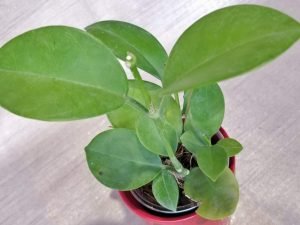
Hoya Autralis
Read more🍀🍀Hoya Australis, commonly known as the waxvine or common waxflower. It is an evergreen climbing vine which may reach 4–10 m (13–33 ft). It has simple opposite glabrous (shiny) leaves 3–6 cm long and 2–5 cm wide. They are succulent (thick and fleshy) and elliptical or ovate in shape; leaves growing in sunnier positions are a more yellowish green while those in shadier locales are dark green in colour. Flowering may occur at any time of year and are quite fragrant.🍀🍀
